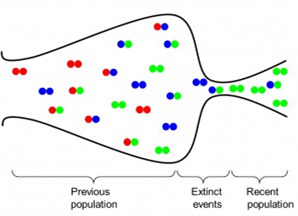Cheng Cheng is from the School of Life Science & Technology at Xi’an Jiaotong University, China, and Jun Yu is from the Beijing Institute of Genomics, Chinese Academy of Sciences. They are authors of an article published in Birds play important roles in ecological balance. They are found everywhere around the globe, with their species numbering nearly twice that of mammals. Unfortunately, the rate of their extinction appears to have increased in the past millennium. Genomics provides a powerful means for discovering molecular signatures of endangered species, which support scientific insights and strategies to assist conservation efforts for those birds. In 1981, one historic sighting happened in China, when seven individuals (from two breeding couples) were identified by experts in the foothills of the Qinling Mountains. An all-out conservation effort was initiated by the Chinese government. The effort, lasting more than 30 years, has resulted in over 2,000 birds in the total population; among them, 500 birds have been released to the wild and the rest remain in captivity in eight local pools. We and our colleagues designed this study as part of a global effort in sequencing representative avian species, where we compared the Ibis’ genomes with eight other endangered and 32 ‘Least Concern’ bird species, hoping to be able to answer some of following questions: Our results published today in We have indeed suggested a few causes of bird extinction based on our results. One of them is DDT, which was first synthesized in 1874 and widely used as an agricultural insecticide at the beginning of the last century. Most of the birds that became endangered did so around this time frame. In 1962, the book Hints for other causes of becoming endangered were found in genome sequences of the endangered birds. For example, the deleterious mutations in brain function genes and metabolism related genes, and genes which are critical for immunity, have lower genetic diversity in the Crested Ibis due to the ‘bottleneck effect’. Bottleneck Effect-genetic information loss A common sequence signature of endangered birds is low genome ‘heterozygosity’ in general, which means the severe loss of genetic diversity which reduces the birds’ adaptation to variable environments. The genetic drift for fixation of changes in brain and metabolism genes of the rescued Crested Ibis population in China is intriguing, and could mean either deleterious mutations in these genes or the possibility of enhanced functions for certain brain behaviors and enhanced metabolism of toxins for survival of the species. In addition, to trace all the Ibises, we developed a set of genome-wide genetic markers for DNA profiling and marker-assisted breeding. As more and more species have been sequenced, we hope that our story and all the genome data we’re publishing will be useful for the rescue of more endangered species ( BioMed Central blog). Image credits: State Forestry Administration, China  The Crested Ibis tells a wonderful story about genomics-assisted rescue. These graceful wading birds were once widely spread in Eastern Asia as ancient Chinese poets praised them as “the red sunsets”. Their population decline began in the last century to the extent that they were thought to have become extinct in the 1960s and 1970s in different countries.
The Crested Ibis tells a wonderful story about genomics-assisted rescue. These graceful wading birds were once widely spread in Eastern Asia as ancient Chinese poets praised them as “the red sunsets”. Their population decline began in the last century to the extent that they were thought to have become extinct in the 1960s and 1970s in different countries. How did the Crested Ibis come to be endangered and nearly extinct? Could our effort really save the bird, starting with current population? How genetically healthy are the present Ibises?
How did the Crested Ibis come to be endangered and nearly extinct? Could our effort really save the bird, starting with current population? How genetically healthy are the present Ibises?

